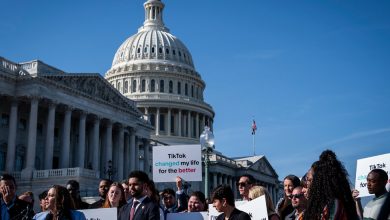A.I. Is Making the Sexual Exploitation of Girls Even Worse

On Tuesday, Kat Tenbarge and Liz Kreutz of NBC News reported that several middle schoolers in Beverly Hills, Calif., were caught making and distributing fake naked photos of their peers: “School officials at Beverly Vista Middle School were made aware of the ‘A.I.-generated nude photos’ of students last week, the district superintendent said in a letter to parents. The superintendent told NBC News the photos included students’ faces superimposed onto nude bodies.”
I had heard about this kind of thing happening to high school girls, which is horrible enough. But the idea of such young children being dehumanized by their classmates, humiliated and sexualized in one of the places they’re supposed to feel safe, and knowing those images could be indelible and worldwide, turned my stomach.
I’m not a technophobe and have, in the past, been somewhat skeptical about the outsize negative impact of social media on teen girls. And while I still think the subject is complicated, and that the research doesn’t always conclude that there are unfavorable mental health effects of social media use on all groups of young people, the increasing reach of artificial intelligence adds a new wrinkle that has the potential to cause all sorts of damage. The possibilities are especially frightening when the technology is used by teens and tweens, groups with notoriously iffy judgment about the permanence of their actions.
I have to admit that my gut reaction to the Beverly Hills story was rage — I wanted the book thrown at the kids who made those fakes. But I wanted to hear from someone with more experience talking to teens and thinking deeply about the adolescent relationship with privacy and technology. So I called Devorah Heitner, the author of “Growing Up in Public: Coming of Age in a Digital World,” to help me step back a bit from my punitive fury.
Heitner pointed out that although artificial intelligence adds a new dimension, kids have been passing around digital sexual images without consent for years. According to a 2018 meta-analysis from JAMA Pediatrics, among children in the 12 to 17 age range, “The prevalence of forwarding a sext without consent was 12.0 percent,” and “and the prevalence of having a sext forwarded without consent was 8.4 percent.”
In her book, Heitner offers an example in which an eighth-grade girl sends a topless photo to her boyfriend, who circulates it to his friends without her permission. After they broke up, but without her knowledge, “her picture kept circulating, passing from classmate to classmate throughout their middle school,” and then “one afternoon, she opened her school email to find a video with her image with sound effects from a porn video playing with it.”




